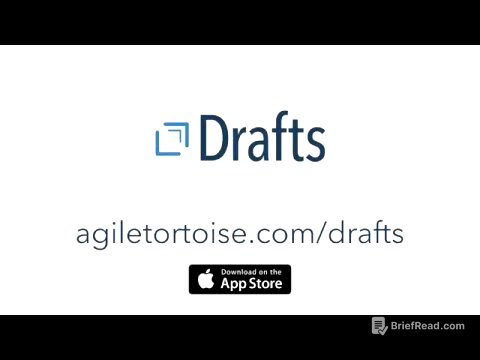TLDR;
This video provides a detailed roadmap for individuals with a 9-to-5 job or college students who aspire to become traders and transition into full-time trading. It emphasizes the importance of not quitting your job prematurely, using your job to fund your trading career, creating a schedule that balances work and trading, and developing a simple, effective trading strategy. The video also highlights the significance of continuous learning, backtesting, and gradually building confidence before making the leap to full-time trading.
- Don't quit job prematurely
- Use job to fund trading career
- Create schedule that balances work and trading
- Develop simple, effective trading strategy
- Continuous learning and backtesting
The Importance of Keeping Your Job [0:24]
The initial and most crucial point is to avoid quitting your current job when starting your trading journey. Many people mistakenly believe that leaving their job will provide more time and focus for trading, but this is a misconception. Trading requires capital, and your job provides a steady income to fund your trading career. Quitting your job prematurely can create financial pressure and hinder your ability to trade effectively. Your current job is your biggest strength as it provides regular cash flow to support your trading endeavors.
Creating a Schedule to Learn Trading [3:11]
The next step is to integrate trading education into your existing work life. While the presenter offers resources like his YouTube channel and trading university, it's essential to create a personalized routine that fits your specific schedule. Weekends should be dedicated to learning and understanding trading, with at least 8 to 10 hours spent on studying and practicing. Consistent learning is crucial in the ever-changing market, and dedicating time to it will help you gain the necessary knowledge and skills.
Finding a Trading Routine That Suits Your Work Life [5:54]
After learning the basics of trading, the next step is to find a trading routine that aligns with your work life balance. This involves identifying time windows when you can focus on trading without affecting your job. The Forex market is suggested due to its high volume during typical after-work hours. If your current job is too demanding, consider finding a less stressful job that allows more time for trading. Avoid trading while working, as it can negatively impact both your job and your trading performance.
Understanding Your Trading Style and Creating a Simple Strategy [8:45]
The video recommends swing trading or day trading for working professionals, but advises against scalp trading due to its high-pressure nature. Swing trading involves holding trades for a few days, while day trading involves entering and exiting trades on the same day. The most important thing is to develop a simple trading strategy that can be easily understood and executed, even when tired or stressed. The strategy should be explainable in two to three sentences to avoid overcomplication.
Backtesting and Making the Transition to Full-Time Trading [12:48]
Backtesting is crucial for training your brain to execute your trading strategy and building confidence. Investing in backtesting software or TradingView premium is a worthwhile investment. Once you start seeing consistent income from trading and have enough capital to cover your expenses for one to two years, you can consider leaving your job. This approach minimizes risk and ensures a smoother transition to full-time trading, without jeopardizing your financial stability or career prospects.









